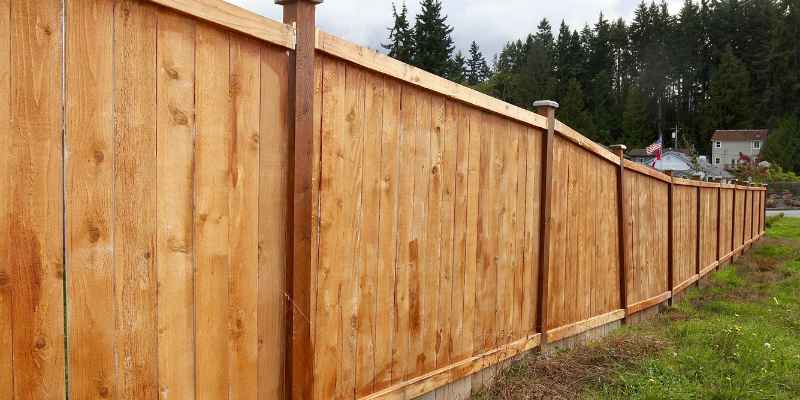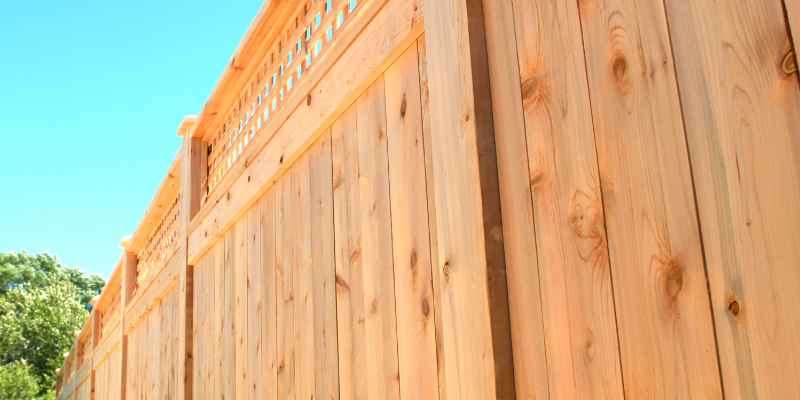Yes, cedar wood should be sealed to protect it from moisture, deterioration, and weathering. Cedar is a popular choice for outdoor furniture, decking, and siding due to its natural beauty, durability, and resistance to decay.
However, without proper sealing, cedar can be susceptible to damage from water, UV rays, and other elements. Sealing cedar helps to minimize moisture absorption, prevent cracking or splitting, and maintain its color and appearance over time. By applying a high-quality penetrating sealant or stain, you can effectively protect your cedar against the elements and extend its lifespan.
Regular maintenance and re-sealing every few years will ensure that your cedar remains in optimal condition for years to come.
Benefits Of Sealing Cedar
Sealing cedar offers numerous benefits, including enhanced durability, protection against moisture damage, and improved resistance to weathering. Regular sealing can help maintain the natural beauty and longevity of cedar wood.
Cedar is a popular choice for outdoor furniture, decking, and siding due to its natural beauty and durability. However, without proper maintenance, cedar can be susceptible to damage from moisture and the sun’s harmful UV rays. This is where sealing cedar comes in. Sealing cedar offers several benefits that help extend its lifespan and enhance its appearance. From protection against moisture damage to preventing sun damage, let’s explore the advantages of sealing cedar.
Protection From Moisture Damage
Cedar is naturally resistant to rot and decay, but prolonged exposure to moisture can still cause it to warp, crack, or develop mold and mildew. When you seal cedar, you create a barrier that prevents water from penetrating the wood. This helps minimize the risk of moisture-related issues and ensures the cedar remains sturdy and attractive for years to come.
Not only does sealing cedar protect it from rain and other external sources of moisture, but it also helps the wood retain its natural moisture content. By reducing the rate at which cedar absorbs and loses moisture, sealing can prevent the wood from drying out and becoming brittle, ultimately increasing its lifespan.
Prevention Of Sun Damage
The sun’s UV rays can take a toll on exposed cedar, causing it to fade and lose its natural color over time. This is particularly true for cedar that is left untreated. By applying a sealant, you provide a protective layer that shields the wood from the damaging effects of the sun.
Sealing cedar not only helps maintain its original color but also prevents the wood from becoming discolored or grayed. This is crucial for preserving the aesthetic appeal of your cedar furniture or outdoor structures, ensuring they continue to stand out in your outdoor space.
In addition to protecting against color fading, sealing cedar can also safeguard the wood against cracking and splitting caused by prolonged sun exposure. The sealant acts as a barrier, reducing the wood’s exposure to heat and UV rays, thus minimizing the chances of damage.
Overall, sealing cedar offers numerous benefits, ranging from shielding the wood against moisture damage to preventing sun-related issues. By taking the time to apply a high-quality sealant, you can maintain the natural beauty and durability of your cedar, extending its lifespan and reaping the rewards of your investment for years to come. So, whether you have a cedar deck, siding, or furniture, it’s worth considering sealing to ensure your cedar remains in optimal condition.

Factors To Consider
Cedar needs to be sealed to protect it from moisture and damage. Factors to consider include the type of cedar, climate, and desired look, ensuring the proper maintenance and longevity of the wood.
When it comes to cedar, one common question that arises is whether or not it needs to be sealed. The answer is not a simple yes or no, as there are several factors to consider. In this article, we will explore these factors in detail to help you make an informed decision about sealing your cedar. The three main factors to consider are weather conditions, use of cedar, and frequency of maintenance.
Weather Conditions
The weather conditions in your area play a crucial role in determining whether or not cedar should be sealed. In regions with high humidity and frequent rainfall, sealing cedar is highly recommended. Sealing helps protect the wood from moisture damage, such as warping, cracking, and rotting. On the other hand, if you live in a dry climate with low humidity, sealing may not be necessary. Cedar naturally possesses water-resistant properties, making it more resistant to damage caused by dry conditions.
Use of Cedar
Another important factor to consider is the use of cedar. If you are using cedar for outdoor purposes, such as decking or siding, sealing is highly recommended. Outdoor cedar is exposed to various elements like UV rays, rain, and temperature fluctuations. Sealing helps enhance the wood’s durability, preventing fading, discoloration, and deterioration caused by these external factors. However, if you are using cedar for indoor applications like furniture or paneling, sealing may not be as crucial. Indoor cedar is generally less exposed to harsh elements, and the natural beauty of the wood can be appreciated without the need for sealing.
Frequency of Maintenance
The frequency of maintenance is the third factor to consider when deciding whether or not cedar needs to be sealed. Sealing cedar serves as a protective barrier that requires periodic maintenance. The frequency of resealing largely depends on the specific product used, but on average, sealing cedar needs to be done every few years. If you are willing to commit to regular maintenance and upkeep, sealing cedar can prolong the wood’s lifespan and keep it looking beautiful for years to come. However, if you prefer a low-maintenance option, leaving cedar unsealed is a viable choice. Unsealed cedar will weather naturally over time, developing a beautiful silver-gray patina.
To summarize, whether or not cedar needs to be sealed depends on several factors. Consider the weather conditions in your area, the use of cedar, and your willingness to maintain and reseal the wood. Ultimately, sealing cedar offers added protection and longevity, especially for outdoor applications. However, if you prefer the natural aging process and a more low-maintenance approach, leaving cedar unsealed may be the way to go.
Types Of Cedar Sealers
When it comes to preserving and protecting your cedar wood, choosing the right sealer is essential. There are two main types of cedar sealers available: oil-based sealers and water-based sealers. Understanding the differences between these two options can help you determine which one is best suited for your cedar.
Oil-based Sealers
Oil-based sealers are highly effective at penetrating deep into the cedar wood, providing excellent protection against water damage and UV radiation. These sealers form a protective layer on the surface of the wood, preventing moisture from seeping in while allowing the natural beauty of the cedar to shine through.
One of the advantages of oil-based sealers is their long-lasting protection. With proper application and maintenance, they can provide years of protection against weathering and decay. Additionally, oil-based sealers enhance the appearance of the cedar, giving it a rich, warm tone.
However, it’s important to note that oil-based sealers require more frequent maintenance compared to water-based sealers. To ensure the continued effectiveness of the sealer, it may need to be re-applied every couple of years or as recommended by the manufacturer.
Water-based Sealers
Water-based sealers, as the name suggests, are primarily made up of water. These sealers are easy to apply and clean up, making them a convenient option for many homeowners. Unlike oil-based sealers, water-based sealers do not emit strong odors and are more environmentally friendly.
Although water-based sealers provide effective protection against water damage, they may not penetrate as deeply into the wood as oil-based sealers. As a result, they may require more frequent reapplication to maintain optimal protection.
On the bright side, water-based sealers offer a natural look, allowing the cedar’s natural colors and grain patterns to show through. They also dry quickly, minimizing the waiting time between applying multiple coats.
Another advantage of water-based sealers is that they can be used on both interior and exterior cedar surfaces. This flexibility makes them a versatile choice for various cedar projects, from decks and fences to furniture and siding.
In Summary
| Oil-based Sealers | Water-based Sealers |
|---|---|
| Forms a protective layer | Easy application and cleanup |
| Long-lasting protection | Environmentally friendly |
| Enhances cedar’s appearance | Dries quickly |
| Requires more maintenance | May require more frequent reapplication |
Ultimately, the choice between oil-based and water-based sealers depends on your personal preferences, the specific project, and the level of maintenance you are willing to commit to. Both options offer effective protection for your cedar, ensuring its longevity and beauty.
Sealing Process
When it comes to protecting your cedar wood, sealing it is an essential step. Not only does sealing help enhance the natural beauty of cedar, but it also extends its lifespan by protecting it from moisture, UV rays, and other damaging elements.
Preparing Cedar Surface
The first step in the sealing process is to prepare the cedar surface. This involves cleaning the wood to remove any dirt, debris, or mildew that may have accumulated over time. You can use a mild detergent or a specialized wood cleaner for this purpose. Scrub the surface gently with a soft-bristle brush, ensuring you cover all areas.
- Ensure the cedar surface is completely dry before applying the sealer.
- If the wood has any rough spots or splinters, sand them down gently to smoothen the surface.
- Use a tack cloth or a microfiber cloth to wipe away any remaining dust or particles.
Choosing The Right Sealer
When choosing a sealer for your cedar wood, it’s important to select a product specifically designed for exterior wood. Here are a few factors to consider:
- Water-based vs. oil-based: Water-based sealers are generally easier to apply and clean up, while oil-based sealers provide a more durable and long-lasting finish.
- Transparent vs. colored: Transparent sealers allow the natural grain and color of cedar to show through, while colored sealers can enhance or alter the wood’s appearance.
- UV protection: Look for a sealer that offers UV protection to prevent sun damage and fading.
Applying The Sealer
Once you’ve chosen the right sealer, it’s time to apply it to your cedar wood. Here’s how:
- Stir the sealer: If the sealer has been sitting for a while, make sure to stir it well before use to ensure a consistent finish.
- Apply in sections: Work in small sections to ensure thorough coverage and to prevent the sealer from drying too quickly.
- Use a brush or a roller: Apply the sealer using a brush or a roller, following the wood’s grain for an even application.
- Allow drying time: Follow the manufacturer’s instructions for drying time. Typically, the sealer will require a few hours to dry completely.
- Apply additional coats: If necessary, apply additional coats of sealer for added protection. Make sure to allow each coat to dry before applying the next.
Sealing your cedar wood is a simple yet effective way to ensure its longevity and maintain its natural beauty. By following these steps and choosing the right sealer, you can enjoy your cedar for years to come.

Maintenance And Reapplication
To keep your cedar looking its best, regular cleaning is essential. By removing dirt, grime, and any contaminants that may have settled on the surface, you can prevent premature wear and damage. Cleaning can be done using a soft brush or cloth, warm water, and a mild detergent. Gently scrub the cedar in a circular motion to loosen any stubborn dirt, then rinse thoroughly with water. Avoid using harsh chemicals or abrasive cleaners as these can strip away the protective sealant.
Inspecting For Wear And Damage
Regular inspections are crucial to identify any signs of wear or damage on your cedar. Over time, exposure to sunlight, moisture, and varying weather conditions can cause the sealant to deteriorate. Inspect the cedar carefully, looking for any areas where the color has faded or the wood appears dry. Check for cracks, splitting, or warping, as these can indicate underlying issues that need to be addressed. Early detection allows you to take prompt action and prevent further damage to your cedar.
Reapplying The Sealer
Reapplying the sealer is a necessary step to maintain the protective barrier on your cedar. It is recommended to reseal your cedar every 1-2 years, but this can vary depending on the level of exposure and wear. Before reapplying the sealer, ensure the cedar is thoroughly cleaned and dried. Apply the sealer using a brush or roller, following the manufacturer’s instructions. Be sure to cover the entire surface evenly, paying extra attention to areas that are more prone to wear. Allow the sealer to dry completely before using or exposing the cedar to moisture.
Conclusion
Sealing cedar wood can provide numerous benefits, including protection against weathering, decay, and UV damage. It acts as a barrier, preserving the natural beauty and integrity of the wood for longer periods. Regular maintenance is essential in maintaining the sealed cedar’s longevity.
By following proper guidelines, homeowners can enjoy the beauty and durability of cedar for years to come. Sealing cedar is undoubtedly a worthwhile investment in maintaining and enhancing the appearance of outdoor structures and furniture.


